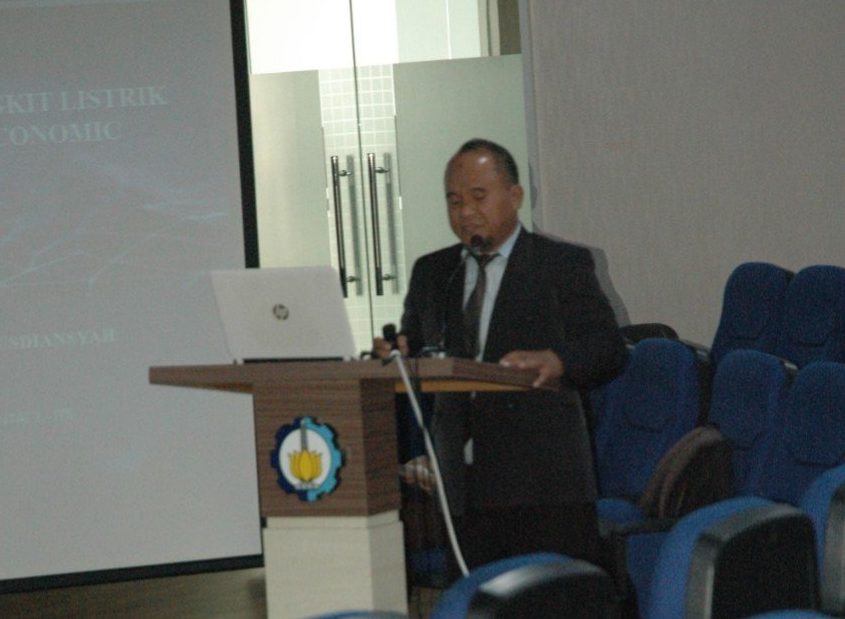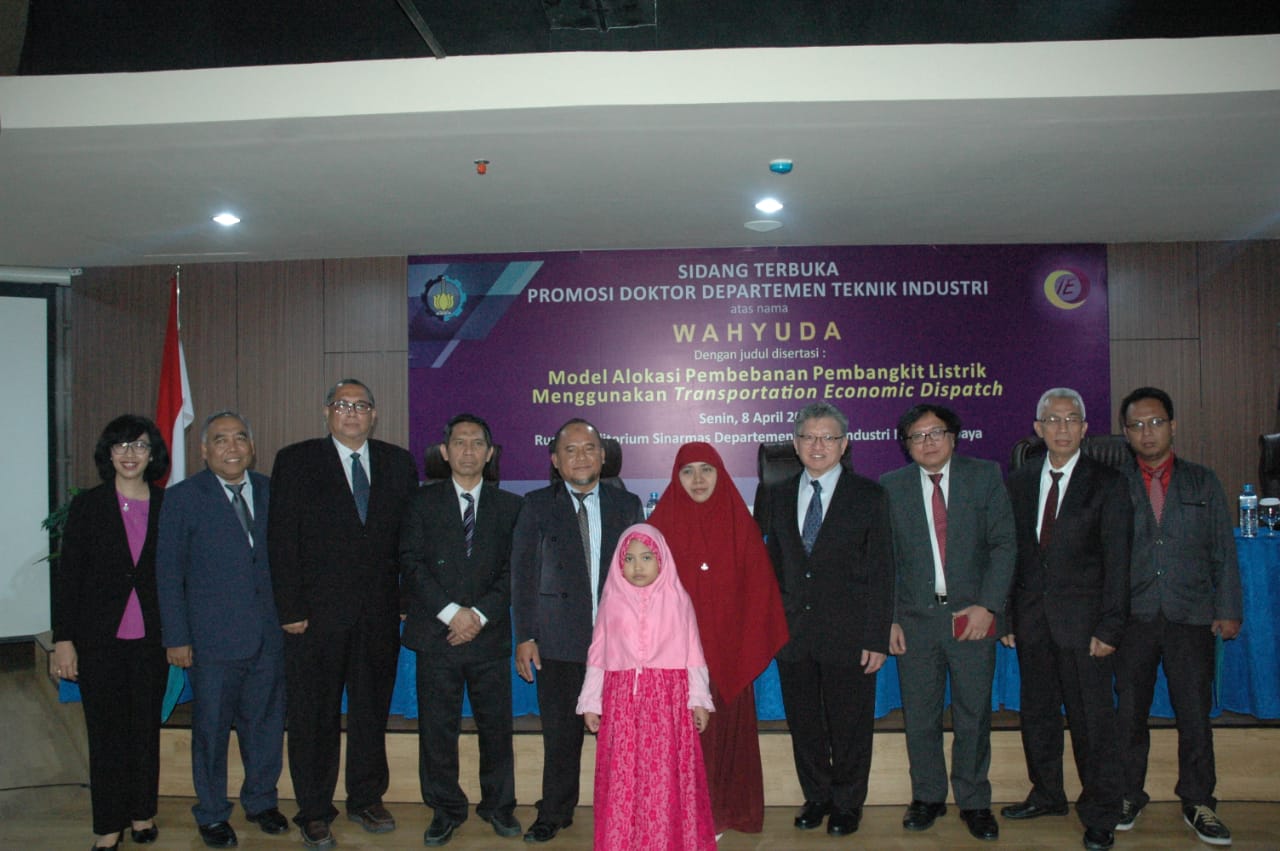Obtained Doctorate by Modeling Power Plant Loading

Wahyuda while presenting his dissertation for a doctorate
ITS Campus, ITS News – Article 33 The 1945 Constitution has mandated the government to play a role in supervising reasonable prices in Indonesia’s electricity system. This prompted Wahyuda, a doctoral student of Department of Industrial Engineering, Institut Teknologi Sepuluh Nopember (ITS), to come up with a solution to the new modeling of the power plant which he presented at the Doctoral Promotion Open Session on Monday (8/4).
Taking place at ITS Sinar Mas Auditorium, Wahyuda explained about his dissertation entitled The Model of Allocation of Electricity Generation using Transportation Economic Dispatch (TED). Mentioned in his dissertation, there are two models proposed in this study, namely the TED model and Deregulated Transportation Economic Dispatch (DTED). Both of these models can carry out a combined optimization between the production and transmission sides (electricity distribution).
In a dissertation led by Prof. Ir Budi Santosa MS PhD, Wahyuda said that the TED model is a combination of transportation models and economic dispatch models. The transportation model has the advantage of being able to allocate distribution of goods delivery from many sources to many destinations. “While the economic dispatch model has the advantage of allocating interconnected power plants,” he explained at the presentation.
Then, continued Wahyuda, the combination produced a TED model that had a combined optimization on the production and transmission sides. Production side optimization is done by the TED model, while the transmission side optimization uses a transportation model. Furthermore, the output of this model is the allocation of plant load equipped with the determination of the optimal transmission line. “Minimum fuel costs are the parameters,” he added.
While the DTED model, according to Wahyuda, is the development of the TED model for electricity market deregulation. In this second model, it is divided into two proposed models from the Medan-born man. First, it is bilateral DTED, and then DTED pool. In the two models it has a cost allocation advantage that can bring maximum profit levels, but has not considered the cost of renting a transmission.
The result, this study states that the TED model has a function and purpose to minimize fuel costs. Then on the economic aspect, based on the current structure of demand and cost of the generator, it produces a DTED pool system that is more profitable than bilateral DTED. But on the contrary, on the environmental aspect precisely the bilateral DTED system is better than the DTED pool. “This is because the bilateral DTED system is able to reduce the level of emissions that occur,” said the man who is also a lecturer at Mulawarman University.
Before closing his presentation, Wahyuda also said that this research would not be completed until just this point. There are so many things that can still be developed from this modeling. Wahyuda also has a plan to patent the model that has been successfully created in the future. “This is in accordance with the directions of our supervisors,” Wahyuda said before the trial participants. (sof /Michelle/ITS Public Relation Officer)

Wahyuda (five from left) with family, supervisor, and examiner after the trial
Related News
-
Anticipating Lost Pet Dogs, ITS Students Invent a Tracking Bag
ITS Campus, ITS News —Losing a pet is a sad thing for its owners. To anticipate this, a team
April 21, 2019 11:04 -
ITS Students Integrate Smart City Service Features Through Visionaries
ITS Campus, ITS News — Institut Teknologi Sepuluh Nopember (ITS) continues to prove itself as a home for talented
April 21, 2019 11:04 -
ITS Students Innovate Eco-Quake Building Concept
ITS Campus, ITS News — Along with the development of technology, the construction sector has also experienced rapid growth
April 21, 2019 11:04 -
Great, ITS Successfully Becomes Overall Champion of the 2024 Indonesian Ship Contest
ITS Campus, ITS News — Proving itself as a home for champions, Institut Teknologi Sepuluh Nopember (ITS) managed to
April 21, 2019 11:04
